Antique rug repair and restoration is our specialty. Our restoration work ranks among the very best in cities throughout California and Las Vegas. With years of experience in restoring, cleaning, and weaving valuable Persian and Oriental rugs such as Serapi, Oushak, Sarough, Heriz, Mahal, and Bakhtiari, we have honed our expertise in this field. We proudly receive rugs for repair from across North America, serving both dealers and private households.
Just like a car, rugs require repairs to address the effects of daily wear and tear over time. The edges and ends of a rug are crucial for preventing it from unraveling. When these parts weaken, prompt rug repair is necessary to prevent further damage. To ensure the longevity of your rug, it is recommended to have maintenance performed every 5 to 10 years.
One common concern is whether repairing a rug decreases its value. In fact, a well-executed repair, using traditional vegetable-dyed wool and expert weaving techniques, can enhance the value of any rug, whether it’s a new piece or an antique treasure. The problem occurs when a rug is repaired poorly, using incorrect materials or techniques that diminish its original beauty. With us, you can trust that your rugs will be repaired to the highest standards. We have decades of experience working with antique rug collectors and know how to preserve the uniqueness and character of every rug—whether old or new.
The most frequent areas requiring rug repair are the edges and ends, where all four sides are reinforced as needed. This process can remarkably transform a worn and fragile rug into one that is not only durable but also beautifully unique. We essentially "frame" your rug, much like an antique painting that looks incomplete without a proper frame. This framing turns your rug into a long-lasting, stunning piece of woven art.
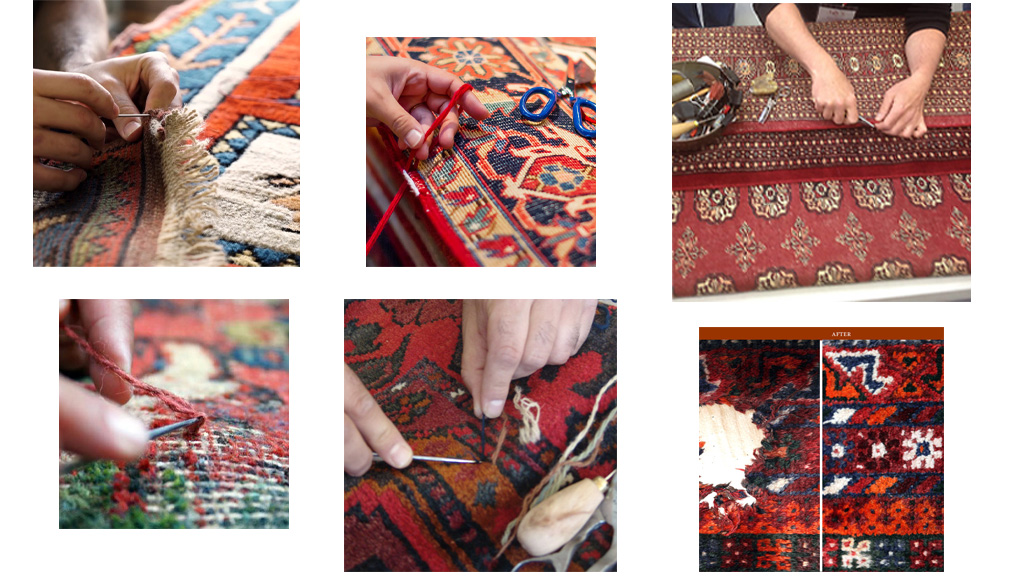
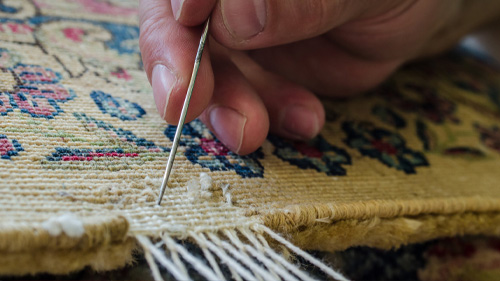
Fringes can be repaired using two methods. The first option is attaching prefabricated fringes to the rug. The second, more intricate method involves creating a new base within the rug itself, where the fringe base is manually woven, followed by hand-tying the fringes. This approach ensures the fringe is restored exactly as it was in the original woven rug.
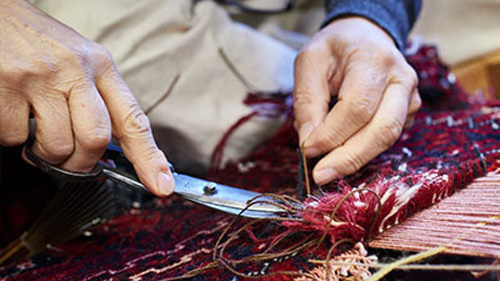
Repairing holes, tears, and worn-out areas in a rug involves recreating the foundational weft and warp threads that form the structure of the rug. After rebuilding the base, the missing patterns and motifs are carefully hand-reproduced. Matching raw threads are chosen and dyed using precise coloring and dyeing techniques to seamlessly blend with the original design.
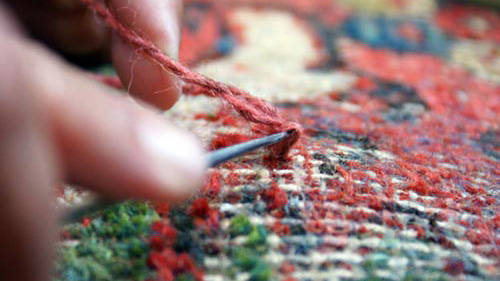
For rugs damaged by flooding, which causes colors to bleed and blend, the restoration process (color separation) is done manually. This technique uses natural materials that carefully restore the original colors without compromising their quality.

After a new rug is woven, a starch-based material is applied to the back of the rug to give it stiffness. However, after about two years of use, this finish wears off and is replaced by sand and debris that settle into the rug's base, making it hard. During the cleaning process, the sand is removed, leaving the rug soft once again. At this point, the finishing needs to be reapplied to restore its original firmness.
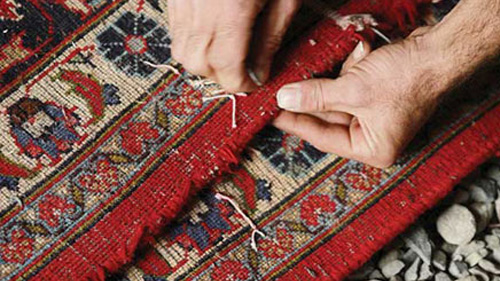

Request Cleaning Services